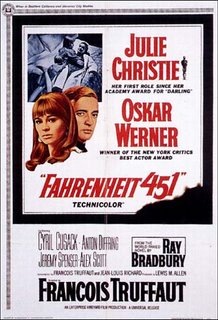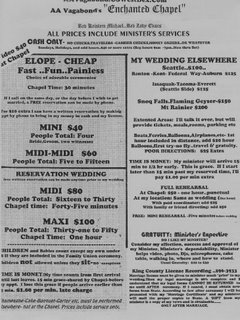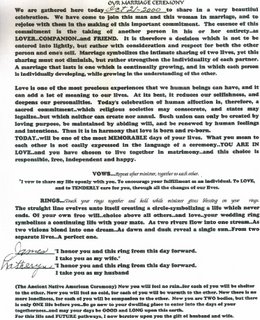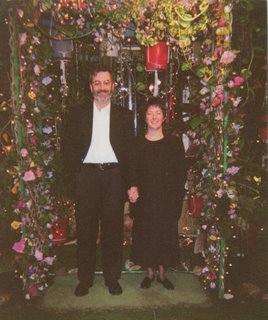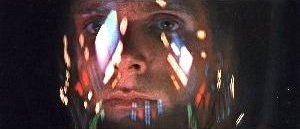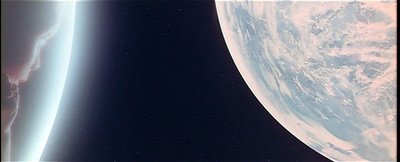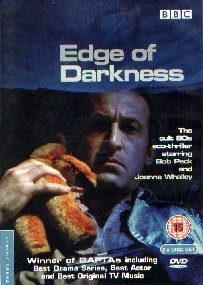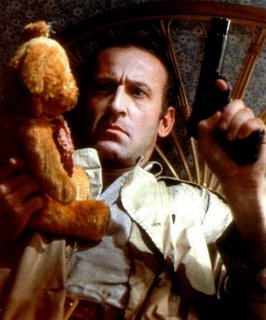Seeing Satan: Or, the Second-Hand Mantra, Part 3
In Parts 1 and 2: I had been meditating quite successfully to relieve stress at work. Now, I was meditating while at work--twenty minutes or so before a session. Things were fine, but I suddenly had this feeling I was being watched.....
It was a vague, background-noise kind of feeling, like a movement of air...a slight pressure change...the faintest of shadows over my shoulder.
And when I say I was "being watched" it had nothing to do with the physical world where I was sitting in a chair in the back store-room at my work. I was "being watched" in the spiritual void into which I dropped every time I meditated. Every time I meditated before, I dropped into a void where I was the only thing in a vast blackness. But now, that didn't seem so certain.
I could control my movement as I floated as gently as a soap bubble, so I slowly twisted to the left and began to see what I had sensed.
It was a face.A face as big and as obvious as it could be in the dark (as Raymond Chandler put it "like a tarantula on an angel-food cake"). It didn't look anything like "Ming the Merciless" floating up there in the corner. It was old...ancient..."wizened" is the way I've always described it. An old, old man's face, lined with deep wrinkles that spoke of centuries of time. No facial hair. No ears that I could see. Just the head.
And it was watching me.
There was no expression on its face, but it's eyes were focussed on me. They were passive eyes, not angry or evil. Patient eyes. Eyes that could bide their time, that had a sense of inevitability about them. All it had to do was wait. Like a spider watching a fly caught in a web.
I've called this "Seeing Satan," but that's a bit of hucksterism--a good title designed to draw you in and get you to read. But I didn't get a sense that this was "Satan" or "The Devil" or whatever folk-tale name you want to apply to the "fallen one."
But it was evil. I knew it down to my bones.
Evil--pure and simple.*
And it was after me.
I went into a panic. I determined to get out of there as fast as I could. I pulled myself out of my meditation fast--my heart pumping in my chest--without regard to any twenty minute limit. Without any sort of gradual ascent.
I wanted out of there...now.
I opened my eyes...and was hit by a blinding pain, like I was hit by a sledge-hammer. I have a wierd reaction to pain...I laugh. When I start laughing, it's time to get serious and take me to an emergency room. But this was more. This was like the pain I felt when I left my hard contact lenses in my eyes for forty-eight hours straight without any sleep...took them out...and within a half-hour, after the cells on the surface of my cornea died and were hit by air...well, it was like someone raked a buzz-saw on the inside of my eye-ball. This was like that. Laugh? I couldn't even breathe. I laid on the floor, panting, scared shitless, head pounding and knowing that I needed to work in less than half an hour.
I went up front. "Shit, Jim!" said Gayle, the receptionist. "What happened to you?"
"Mmokay" I mumbled. "You got asp'rn?"
I took three.
I made it through. But that face stayed with me constantly. I still remember it...floating in the blackness, and I'm sure it's still waiting.
And I've never meditated again.
True story.
Another true story: Years later, I struck up an acquaintance with a guy named "Todd." Very smart. Very witty. A radio guy. "Todd" dropped out of sight for awhile, and when he resurfaced, I asked him where he'd been. "You won't believe it," he said. And I kinda don't, but it makes a good story. As he told it, one day he walked into work, and he was able to read the thoughts of all of his co-workers. Rather odd, that. He went into a bit of a panic, and went through a battery of tests to determine if he was having a seizure, or had a tumor on the brain, or something. They found nothing unusual, other than the fact that he could read people's minds...diagnose ailments without any medical background. After resisting, he embraced this little ability, writing a column about it in a local daily as "Psychic Guy." "Todd" is a writer by trade, and if the "Psychic Guy" bit is a fake, he did a wonderful job spinning the tale. I went to a speaking engagement he did and his descriptions of his exploits didn't deviate from what he told me one iota. This is a long way of getting to the punch-line, but I told "Todd" about this TM experience of mine with the face, and he said, in a way like it was the most obvious thing on Earth, "Oh! Well, you just didn't know how to protect yourself!"
"I just didn't know how to protect myself." Hmmm.
It falls in line with one of my basic rules of thumb: "When all else fails, read the instructions." Or, take a class. Someday I may drop into that little world again...but if I do, it's because I'm taking a class or learning how to do things the proper way. Don't do stuff unprepared.
And watch out for those faces in the dark....
Happy Halloween!!
One of the best Halloween pranks ever foisted on the woefully-gullible American public (that had nothing to do with an election) occurred 68 years ago tonight, when the Martians attacked New Jersey, led by Orson Welles. WNYC's "Radio Lab" did a terrific episode about it a few years back, and you can link to it here.
* "What is it, Buckaroo?" "EVIL! Evil, pure and simple from the eighth dimension!!"--lines from "The Adventures of Buckaroo Banzai: Across the Eighth Dimension"--supposed th be the first film in a series that never got past the first installment. A wacky mess of a film about a 20th century Renaissance man, who's a cross between Dr. Who and Doc Savage--a paradox, if ever there was one (eh-heh!). That "Evil, pure and simple line" comes up in it and I still laugh, even while the hairs on the back of my neck stand on end.



